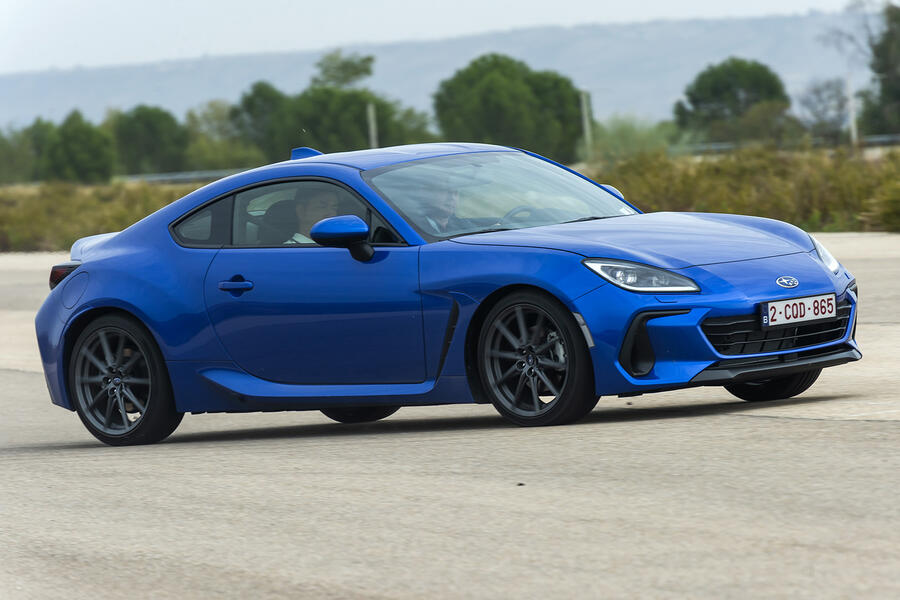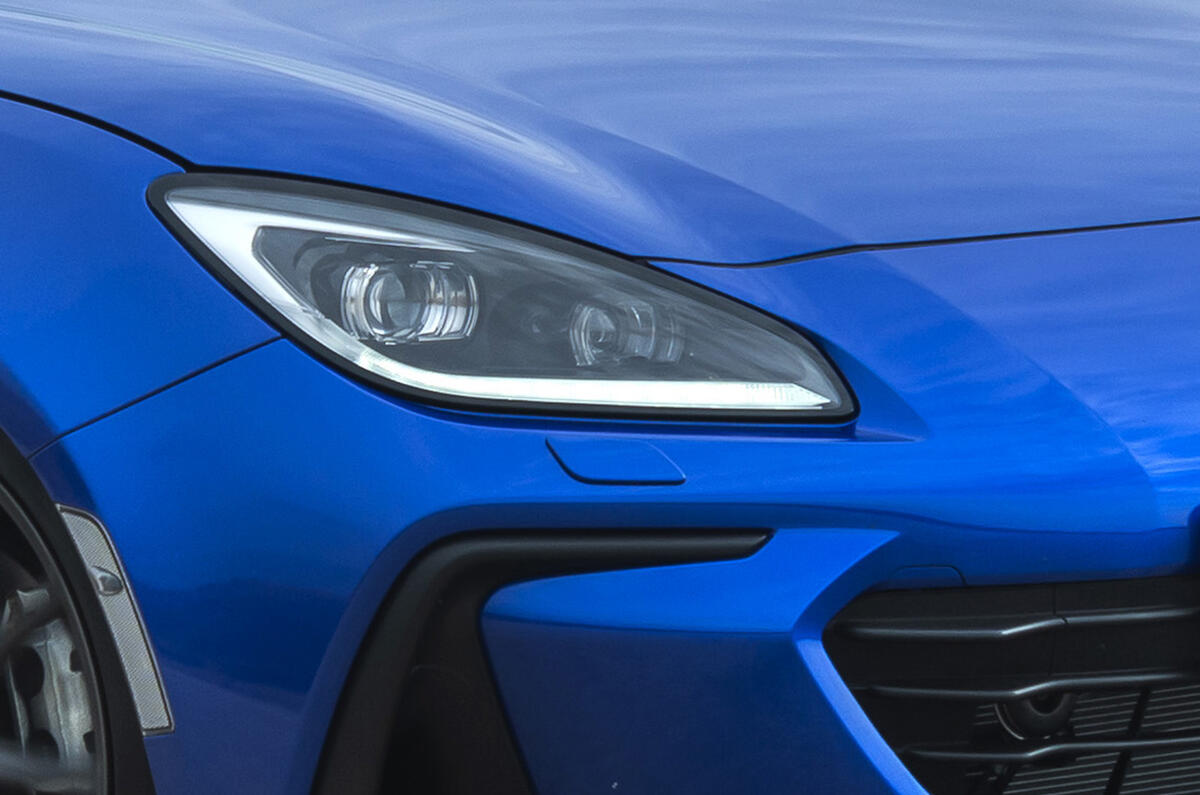That greater sophistication comes through a different tune for the suspension, the steering and the ECU, as well as a different mounting for the rear stabiliser. There is also more aluminium used for key suspension components in the BRZ, rather than the steel parts used in the GR86. The differences, notes Sugiyoma, aren’t night and day, and are easier to feel when you drive than to describe. No pressure for yours truly, then…
We’re driving the very first European-spec BRZ to make it over to this side of the world, and doing so only on the confined proving ground of Inta, near Madrid. It doesn’t take long to notice a difference between the two cars. It’s in those first few metres, the first turn of the wheel or bump in the road, even, after a back-to-back test between the GR86 and the BRZ.
The new GR86 feels a more grown-up car than its predecessor, even if so many of the original’s thrills remain, and this maturity is what’s pushed further on the Subaru. There’s greater compliance to the ride, extra heft to the steering (with no loss of feel, mind) and a touch less roll when cornering. It actually feels a bit Porsche like in some regards, in its maturity. On one particular gnarly run of bumps on the high-speed bowl at Inta, the GR86 sends your head flying towards the roof, whereas the BRZ keeps it more at ground level.

But this is no sensible sports car: far from it. As with the GR86, the bassy 2.4-litre flat four feels a much stronger engine than the 2.0-litre unit in the BRZ before it, and is hugely tractable. Sounds great, goes even better, and that silky-smooth six-speed manual gearshift and heavy clutch pedal are things to cherish, because we won’t experience their ilk for much longer. It's tough telling any difference here from the GR86, though.














